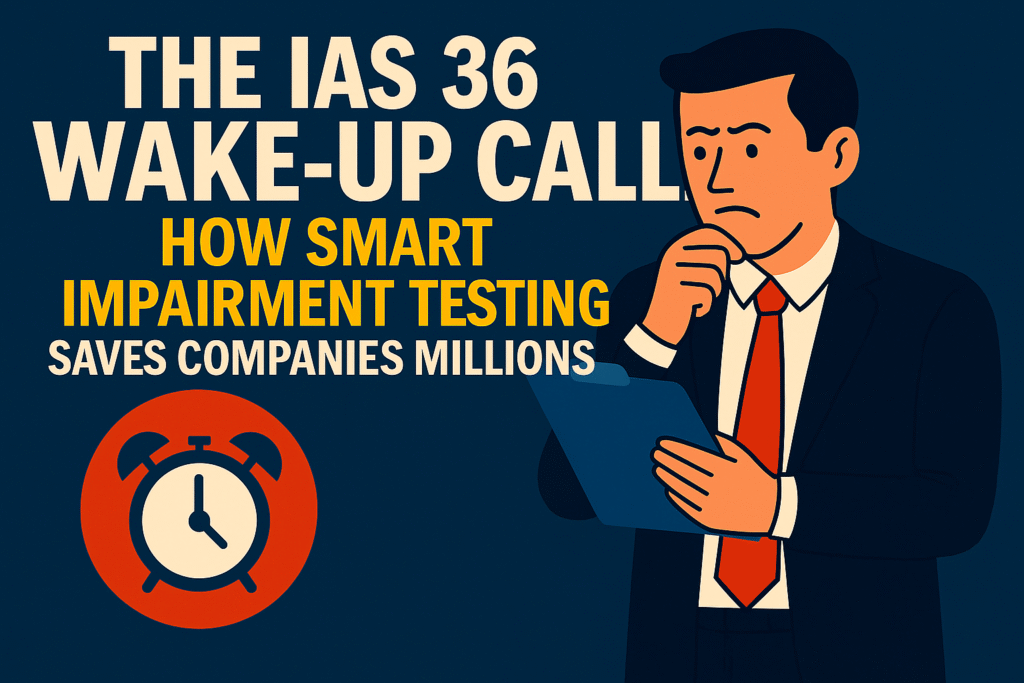The IAS 36 Wake-Up Call: How Smart Impairment Testing Saves Companies Millions

Here’s a scary thought: Your company might be sitting on assets that are worth far less than your books show. Worse? You might be testing for impairment completely wrong without knowing it.
The Hidden Trigger
Most accountants know the obvious impairment triggers: damaged equipment, obsolete inventory, struggling subsidiaries. But IAS 36 has subtle triggers that sneak past even careful professionals.
The one everyone misses? Market capitalization falling below net assets.
If your company’s stock price drops and stays down, that’s a trigger. Doesn’t matter if operations are fine. Doesn’t matter if you’re profitable. IAS 36 says test everything.
The Calculation Confusion
Here’s where it gets messy. You need the “recoverable amount”—the higher of:
- Fair value less costs to sell
- Value in use
Sounds simple? It’s not.
Common mistake: A manufacturing company has a production line showing $10 million on the books. Market price for similar equipment? $7 million. Many accountants stop there and write down $3 million.
But wait—what if that production line generates $2 million in cash flow annually for the next 8 years? With a 10% discount rate, the value in use might be $11 million. No impairment needed!
The Group Problem
The biggest trap? You can’t always test assets individually. IAS 36 requires testing at the “cash-generating unit” level—the smallest group of assets that generates independent cash flows.
One retail chain tested each store separately and wrote down dozens of locations. The problem? Their online sales supported all stores. The correct CGU was the entire retail network, which was profitable overall. Result? Massive reversal and red faces all around.
Your Takeaway as an Accountant
Create an impairment trigger checklist and review it quarterly—not just at year-end. When testing, always calculate both fair value AND value in use. Document why assets belong in specific CGUs. Most importantly, remember that impairment testing isn’t about being conservative—it’s about being accurate.
Good news rarely makes headlines, but avoiding bad news? That’s priceless.
Join ACCOUNTANT MINDSET—where we turn complex standards into clear action plans.
